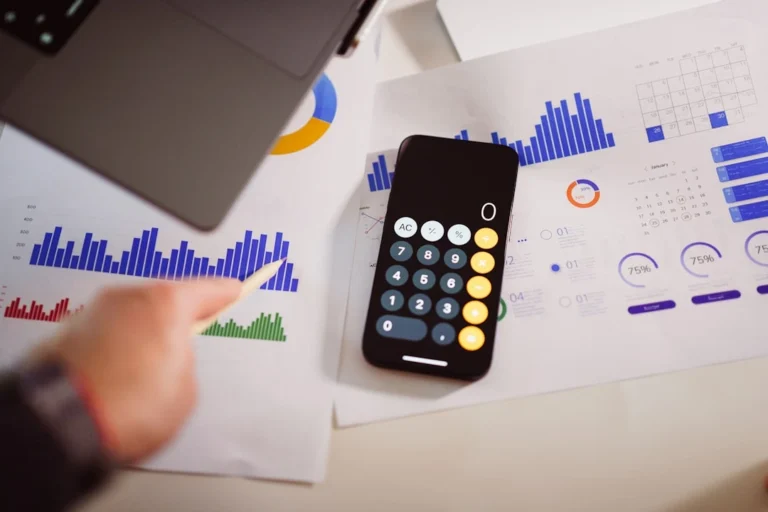From 1 July 2025, Australian businesses and individual taxpayers will feel the full sting of ATO interest. Until now, the General Interest Charge and the Shortfall Interest Charge were unpleasant but at least partially softened by a deduction in the following tax return. That deduction disappears on 1 July 2025. A company that carries a one-year $100,000 tax debt at the current GIC rate of roughly 11 per cent will pay about $11,000 in interest and will no longer recover up to $2,750 of that cost through a deduction at the 25 per cent corporate tax rate. Over time that extra outlay compounds, turning the ATO from a reluctant lender into the most expensive unsecured creditor in town.
The Federal Government stated in the Explanatory Memorandum to the Treasury Laws Amendment (Responsible Buy Now Pay Later and Other Measures) Act 2024 that the policy’s purpose is to remove any incentive for taxpayers to treat the ATO as a cheap source of finance. The following guide explains exactly what has changed, how the two interest charges work, what the numbers look like in real dollars and cents, and which strategies can keep the cost of late or disputed tax to an absolute minimum.
How the law changed
Before the amendment, taxpayers relied on section 8-1 of the Income Tax Assessment Act 1997 to claim ATO interest as an ordinary deduction. Schedule 5 to the Treasury Laws Amendment Act 2024 inserted new wording in section 26-5 that expressly denies a deduction for “an amount of general interest charge or shortfall interest charge” incurred on or after 1 July 2025. The denial applies regardless of the year to which the underlying tax relates. Transitional rules allow deductions only where the interest was incurred before 1 July 2025 and validly claimed in a return for an earlier income year.
Because the change sits in Division 26, auditors will treat any deduction claim after the effective date as a false or misleading statement. Administrative penalties under Division 284 of Schedule 1 to the Taxation Administration Act 1953 can reach 75 per cent of the shortfall plus further GIC on the penalty amount, so an incorrect deduction may easily double the financial pain.
What the General Interest Charge actually is
The General Interest Charge applies to most unpaid tax, including income tax, PAYG withholding, GST, FBT and super guarantee charge. It is imposed automatically the day after a due date is missed. Section 8AAD of the Taxation Administration Act 1953 sets the daily rate at the 90-day Bank Accepted Bill rate for the previous quarter plus an uplift of 7 percentage points, divided by 365. The ATO publishes the annualised GIC rate quarterly; for the quarter beginning 1 October 2025 the rate is 11.17 per cent. GIC compounds daily, so a three-month delay costs slightly more than one-quarter of the annualised rate.
What the Shortfall Interest Charge is
The Shortfall Interest Charge applies when the Commissioner issues an amended assessment that increases a taxpayer’s liability. It covers the period from the original notice of assessment to the day before the amendment is issued. SIC uses the same base rate as GIC but adds only 3 percentage points, so the current annualised rate is 7.17 per cent. While cheaper than GIC, SIC can still accrue for several years if a dispute drags on. Once 60 days after the amended assessment passes, any remaining unpaid amount attracts GIC rather than SIC, meaning the higher rate and daily compounding begin.
Comparing the two charges
| Feature | General Interest Charge (GIC) | Shortfall Interest Charge (SIC) |
|---|---|---|
| Legislative reference | TAA 1953 Sch 1 Pt IIA | TAA 1953 Sch 1 Pt IIB |
| Trigger | Late payment of a tax debt | Increase in tax on amended assessment |
| Base rate | 90-day BAB rate | 90-day BAB rate |
| Uplift | +7 % | +3 % |
| Current annualised rate (Oct 2025) | 11.17 % | 7.17 % |
| Compounding | Daily | Daily |
| Deductible before 1 Jul 2025 | Yes | Yes |
| Deductible on/after 1 Jul 2025 | No | No |
Real-world cost scenarios
The next table shows how the loss of deductibility changes the after-tax cost of ATO interest for a company taxed at 25 per cent and an individual taxed at 39 per cent (including Medicare levy). The calculation assumes interest accrues for exactly one year and ignores compounding differences between GIC and SIC to keep the comparison clear.
| Taxpayer type | Debt balance | Annual GIC at 11.17 % | Tax saving before 1 Jul 2025 | Net cost before 1 Jul 2025 | Net cost after 1 Jul 2025 | Increase in real cost |
|---|---|---|---|---|---|---|
| Company (25 %) | $50,000 | $5,585 | $1,396 | $4,189 | $5,585 | $1,396 |
| Company (25 %) | $100,000 | $11,170 | $2,793 | $8,377 | $11,170 | $2,793 |
| Individual (39 %) | $50,000 | $5,585 | $2,178 | $3,407 | $5,585 | $2,178 |
| Individual (39 %) | $100,000 | $11,170 | $4,356 | $6,814 | $11,170 | $4,356 |
For a medium-sized business carrying a $500,000 debt, the extra annual cost jumps by almost $14,000 at the company rate and more than $21,000 at the top individual rate. Over a multi-year dispute those dollars grow fast, crowding out investment in wages, inventory and expansion.
Transition issues and timing traps
Any GIC or SIC that accrued up to 30 June 2025 remains deductible if it is claimed in the correct tax return. A taxpayer who intends to deduct pre-1 July 2025 interest must therefore finalise bookkeeping promptly. Interest will frequently straddle the cut-off date, especially for debts on quarterly or monthly activity statements. In that case the portion before midnight on 30 June is deductible; the portion from 1 July onwards is not. Careful apportionment is essential: the ATO’s online account history separates daily charges, making the split evident.
Entities with a substituted accounting period do not escape the rule. The legislation refers to the date the interest is incurred, not the taxpayer’s income year. A June-balancing company and a 31 December-balancing subsidiary both lose the deduction on the same calendar day.
Strategic payment planning
The loss of deductibility changes the mathematics of every cash-flow decision that involves tax debt. Previously, some businesses calculated that paying the ATO last made sense because the interest rate net of tax was cheaper than an overdraft or trade finance facility. That equation no longer holds. Now the headline GIC rate equals the after-tax rate. Unless a business can borrow elsewhere for less than 11 per cent unsecured, clearing ATO debt first is the rational choice.
Payment arrangements with the ATO remain available but cost more in real terms. The Commissioner may allow periods of up to 24 months routinely and longer by exception. Interest continues to accrue on outstanding balances under a plan, so taxpayers should model different schedules. For example, doubling the monthly repayment on a $100,000 plan from $4,500 to $9,000 slashes total interest from about $5,900 to $3,100 at the current rate, a saving of $2,800 without any tax offset.
Cash-flow forecasting under the new regime
Smart forecasting starts with the ATO Integrated Client Account. Businesses should download the statement of account each month, identify which liabilities carry GIC and project interest forward based on expected payment dates. Integrating that forecast into a 13-week rolling cash-flow model highlights pinch points well before they bite. Managers can then accelerate invoicing, adjust stock purchases or draw on approved finance lines to extinguish tax debts before interest balloons.
Where a dispute is underway, budgeting for SIC plus potential GIC on late payment protects against a liquidity shock if the decision goes against the taxpayer. Suppose an amended assessment for 2019 is likely but quantum is uncertain; cash-flow models should include SIC up to the anticipated issue date and GIC thereafter until payment.
When remission still makes sense
The Commissioner’s power to remit GIC or SIC survives. PS LA 2011/12 explains the principles: full remission is rare and usually linked to ATO delay or natural disaster; partial remission recognises circumstances beyond the taxpayer’s control. Because interest is no longer deductible, a successful remission effectively produces a 100 per cent saving rather than a post-tax saving. That makes a well-argued remission request more valuable than ever, especially for events like cyber-attacks, floods or serious illness. Taxpayers should lodge remission requests early, include timelines, evidence of proactive compliance and a realistic payment proposal.
Sector-specific implications
Construction businesses often run tight margins and staggered progress payments. An unexpected variation or client dispute can leave large PAYG instalments unfunded. Under the new rules, interest on any resulting debt hits the bottom line hard, eroding already thin profit. Medical practices that outsource bookkeeping frequently discover super guarantee shortfalls years after the fact; SIC on amended assessments will now bite at the full rate. Start-ups accustomed to reinvesting every dollar need to reserve cash for PAYG withholding because the ATO’s cost of capital now exceeds many venture debt facilities. Retailers affected by seasonal demand must consider financing inventory through commercial lenders rather than deferring BAS payments.
Interaction with other deductions
Commercial borrowing costs remain deductible under section 8-1. That means refinancing ATO debt with a bank facility may reduce the after-tax cost even if the nominal rate is similar. For instance, a 10 per cent line of credit costs 7.5 per cent after tax at the 25 per cent company rate, still cheaper than 11 per cent nondeductible GIC. Directors need to weigh security requirements and covenants against the saving.
Interest imposed by state revenue offices on payroll tax or land tax can still be deductible if the state legislation classifies it as interest rather than penalty. Businesses must therefore separate federal from state liabilities in their ledgers to avoid over-claiming.
Accounting and record-keeping
From 1 July 2025, chart-of-accounts structures should move GIC and SIC out of deductible expense lines and into non-deductible categories. Year-end tax adjustments must add back any amounts inadvertently coded to deductible interest. Bookkeepers should retain daily interest schedules from the ATO to support transitional deductions for the 2025 income year. The usual five-year record-retention rule under Division 382 of the TAA 1953 applies.
Case study: Early payment versus payment plan
Blue Wattle Pty Ltd lodged its 2025 company tax return late and owed $200,000 payable on 1 December 2025. Cash-flow forecasts suggested surplus funds only in March 2026. Management faced three options:
- Do nothing until March, incurring four months of GIC.
- Enter a 12-month payment plan commencing December at $17,600 per month.
- Borrow $200,000 from the bank at 10 per cent and pay the ATO immediately.
The numbers stack up as follows.
| Option | Total GIC paid | Bank interest paid | Deductible component | Net after-tax cost | Comments |
|---|---|---|---|---|---|
| Wait four months | $7,440 | $0 | $0 | $7,440 | Highest cost, reputational risk |
| 12-month plan | $11,300 | $0 | $0 | $11,300 | Spreads cash but costs more |
| Bank loan | $0 | $20,000 | $5,000 | $15,000 | Slightly higher cost than waiting four months but preserves ATO compliance rating |
In Blue Wattle’s circumstances, the company chose the bank loan because it maintained a clean tax record, critical for winning government contracts. Before July 2025 the same analysis would have favoured the 12-month plan because 25 per cent of the GIC was deductible, lowering that option’s real cost. The new rule changes behaviour.
Frequently asked questions
Is interest on BAS liabilities also nondeductible
Yes. GIC attached to any amount the Commissioner is required to collect under a taxation law is denied deduction from 1 July 2025. That includes GST, PAYG withholding, PAYG instalments and fringe benefits tax.
Can I still claim GIC incurred before 1 July 2025 if I pay it later
The deduction depends on when the interest is incurred, not when it is paid. If the interest accrued before 1 July 2025 it remains deductible, even if you pay it afterwards. You must, however, claim it in the first income year in which it was incurred.
Does the rule apply to interest the ATO incurs on delayed refunds
No. Interest the ATO pays to you, such as Interest on Overpayments, continues to be assessable income and still forms part of your tax return.
Will the ATO automatically prevent claims for GIC and SIC in company tax returns
The ATO’s electronic lodgement service contains labels for deductible and non-deductible interest but cannot always detect misclassification. Preparers must review deductions manually to avoid audit adjustments and penalties.
What if my tax agent made an error and I receive an amended assessment after 1 July 2025
SIC will apply from the original assessment date to the day before the amendment. That SIC is nondeductible even if the error was the agent’s fault. You may seek remission if you can demonstrate that you took reasonable care and relied on professional advice.
Could the Government reverse this policy in the future
Anything is possible, but both Treasury and the ATO have signalled no appetite for repeal. The policy aligns with global trends that treat administrative interest as a penalty rather than a cost of earning income.
Key takeaways and next actions
The withdrawal of deductibility turns ATO interest into a genuine penalty rather than a tolerable financing expense. Businesses should audit existing debts, re-prioritise cash-flows, finalise transitional deductions promptly and consider refinancing tax liabilities through commercial lenders where the after-tax rate is lower. Taxpayers engaged in disputes should factor the nondeductible cost of SIC into settlement decisions. Finally, remission remains a powerful tool and is now worth more than ever.
In short, paying the ATO on time has always been wise; from 1 July 2025 it will be the cheapest option as well.





